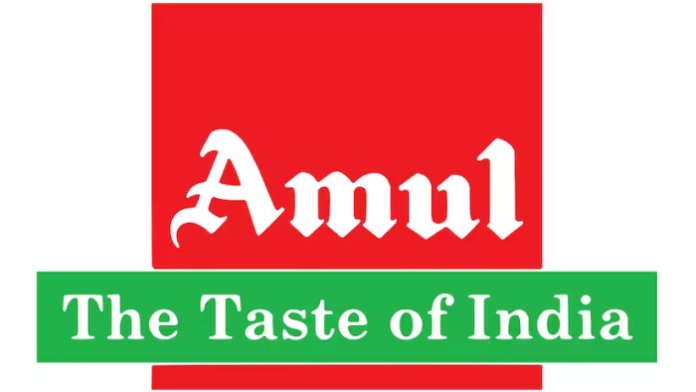New Delhi, October 16, 2024: India’s growth story can continue if it streamlines and effectively manages its supply chain like the iconic dairy brand Amul that recently entered the US market. Amul formed a strategic partnership with the Michigan Milk Producers Association (MMPA) to facilitate its US product launch. MMPA is responsible for the collection and processing of milk, while the Gujarat Cooperative Milk Marketing Federation (GCMMF), which operates Amul, oversees marketing and branding initiatives. Amul’s milk products are currently available in key markets, including New York, New Jersey, Chicago, Washington, Dallas, and throughout Texas. Amul has outlined plans for further expansion into major cities across the US and eventually into additional international markets according to the reports published in logisticsviewpoints.com.
The Background
Founded in 1946, Amul (initially Anand Milk Union Limited) is more than a dairy brand; it’s a cooperative movement. In the 1940s, Gujarat’s dairy farmers united against exploitative pricing by private firms, led by Verghese Kurien. This laid Amul’s foundation, empowering farmers with fair prices and delivering quality dairy products to consumers at affordable rates. Amul’s model supports small producers by integrating large-scale economics, cutting out intermediaries, and connecting producers directly with consumers.
Amul’s Supply Chain
The Indian dairy industry is among the fastest growing sectors globally, providing livelihoods for millions of farmers and contributing over 5 percent to the economy. As the industry expands, there is an increasing need to implement sustainable practices throughout the supply chain to reduce environmental and social impacts while ensuring long-term viability. As one of the largest producers and consumers of milk, India’s dairy sector has undergone significant transformation in its supply chain due to various socio-economic factors and the dedicated efforts of industry stakeholders. Amul, a household name in India, owes its success to several key factors: strict hygiene standards, high-quality products, product diversification, effective marketing strategies, and efficient supply chain management.
Amul’s supply chain model is a well-structured and decentralized cooperative framework that focuses on efficiency and farmer welfare. These are the key components of their model:
Cooperative Structure: Amul operates through a cooperative model where farmers are members of village dairy cooperatives. This empowers them to have a stake in the business and share profits.
Direct Procurement: Milk is collected directly from farmers at the village level. This reduces intermediaries, ensuring that farmers receive a higher price for their milk.
Milk Processing: After collection, milk is transported to regional processing plants, where it is pasteurized and packaged. Amul has established a robust network of chilling centers and processing facilities.
Distribution Network: Amul employs a wide distribution network that includes a mix of direct sales to retailers, wholesalers, and through its own branded outlets. This extensive network ensures that products reach consumers efficiently.
Quality Control: The organization maintains strict quality control measures throughout the supply chain, from farm to consumer, to ensure high-quality products.
Innovation and Diversification: Amul continuously diversifies its product range, expanding beyond milk to include butter, cheese, ice cream, and other dairy products, adapting to consumer preferences.
Technology Integration: Use of technology in logistics, inventory management, and supply chain tracking has helped improve efficiency and transparency.
Sustainability: Amul focuses on sustainable practices, promoting eco-friendly methods among farmers and minimizing waste throughout the supply chain.
This model not only enhances productivity but also supports rural development by improving the livelihoods and empowering millions of farmers in India.
GCMMF and Brand Amul
The Gujarat Cooperative Milk Marketing Federation (GCMMF) serves as the marketing entity for all the unions within Gujarat. GCMMF relies on strong-recall advertising rather than heavy expenditures. The products are marketed under the Amul brand name, utilizing the recognizable Amul Girl to deliver witty commentary on contemporary events.
Amul is one of the first FMCG firms in India to employ internet technologies to implement B2C commerce. Another e-initiative provides farmers access to information related to the dairy sector (markets/technologies etc.) through net-enabled kiosks in the villages. Amul has also implemented a Geographical Information System (GIS) at both ends of the supply chain (milk procurement and marketing). In collaboration with IBM, Amul has set up an ERP base system to integrate its upstream and downstream partners to improve efficiency, reduce wastage and balance the supply and demand. The group turnover for Amul in 2023-24 is Rs 80,000 crores ($10 billion), which is an increase from Rs 72,000 crores ($9 billion) in 2022-23.
Conclusion
Amul’s transformation from a farmer-led cooperative to a global brand is truly inspiring. Its recent launch in the US is a bold step toward establishing a strong foothold in the international dairy market. This venture’s success will be closely watched, not only for its implications for Amul but also as a source of inspiration for other Indian brands aspiring to foray into the international arena.

































